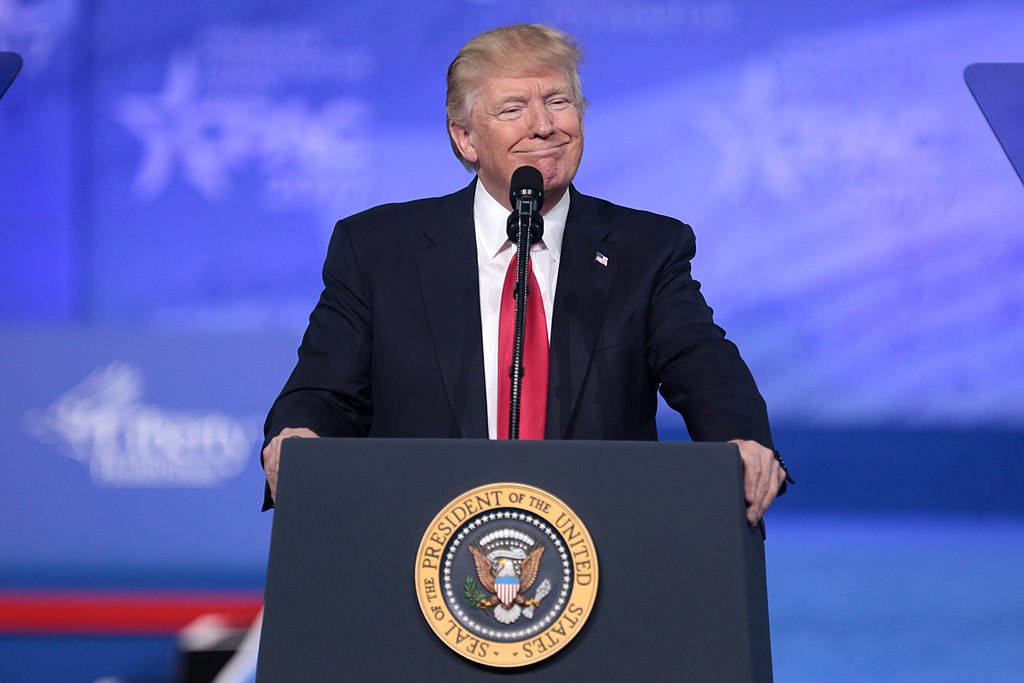As President Donald Trump prepares to assume office in January 2025, his administration is poised to implement a series of aggressive trade policies aimed at reshaping the United States' economic relationships. Central to this agenda is the imposition of substantial tariffs on imports, particularly targeting China and the European Union, with the stated goal of bolstering domestic industries and safeguarding American employment.
Escalation of Tariffs on Chinese Imports
A cornerstone of Trump's trade strategy involves imposing nearly 40% tariffs on Chinese goods in early 2025. This move is anticipated to significantly impact China's economic growth, potentially reducing it by up to one percentage point. The proposed tariffs are markedly higher than those enacted during Trump's first term, which ranged from 7.5% to 25%. Economists warn that such measures could exert additional pressure on China's economy, which is already grappling with a prolonged property downturn and weak domestic demand.
Concerns Over Trade Practices with Mexico
The Trump administration has expressed apprehension regarding Mexico potentially serving as a conduit for cheaper Chinese goods entering the North American market. Canada has aligned with U.S. concerns, highlighting Mexico's lack of significant tariffs on Chinese products, in contrast to Canada's own measures, which include a 100% tariff on electric vehicles and a 25% tariff on steel and aluminum. This issue is expected to be a focal point in upcoming trade discussions, especially with the United States-Mexico-Canada Agreement (USMCA) due for review in 2026.
Appointment of Howard Lutnick as Commerce Secretary
In a move signaling a firm commitment to protectionist trade policies, Trump has nominated Howard Lutnick, CEO of Cantor Fitzgerald, as Secretary of Commerce. Lutnick, a prominent Wall Street figure and supporter of Trump's economic vision, is expected to oversee the implementation of increased tariffs, particularly on imports from the European Union and China. His appointment underscores the administration's intent to prioritize domestic economic growth through stringent trade measures.
Potential Impacts on the Global Economy
The proposed trade policies have elicited concerns about their potential to disrupt global trade dynamics. Industries such as technology, footwear, apparel, and auto parts have voiced apprehension that heightened tariffs may lead to increased costs for American consumers, with projections indicating potential household expenses could rise by up to $7,600 annually. Critics argue that such protectionist measures could ignite trade wars, adversely affecting the global economy.
Public Reaction
The administration's trade agenda has sparked a spectrum of reactions:
-
@TradeWatchdog: "Trump's tariff plans are a double-edged sword. Protecting jobs is crucial, but at what cost to consumers?"
-
@GlobalEconomist: "Escalating tariffs could lead to retaliatory measures, potentially harming international trade relations."
-
@ManufacturingUSA: "Domestic industries stand to benefit from reduced competition, but the long-term effects remain uncertain."
Conclusion
President Trump's 2025 trade agenda reflects a decisive shift toward protectionism, with substantial tariffs aimed at reshaping the United States' economic landscape. As these policies unfold, their implications for both domestic industries and the global economy will be closely scrutinized.



 U.S. Pushes New Gaza Governance Plan With International Force to Secure Ceasefire
U.S. Pushes New Gaza Governance Plan With International Force to Secure Ceasefire  U.S. Initiates $11.1 Billion Arms Sale to Taiwan Amid Rising China Tensions
U.S. Initiates $11.1 Billion Arms Sale to Taiwan Amid Rising China Tensions  Fernando Haddad Confirms He Will Not Run for Office in 2025, Signals Possible Exit as Brazil’s Finance Minister
Fernando Haddad Confirms He Will Not Run for Office in 2025, Signals Possible Exit as Brazil’s Finance Minister  EU Approves €90 Billion Ukraine Aid as Frozen Russian Asset Plan Stalls
EU Approves €90 Billion Ukraine Aid as Frozen Russian Asset Plan Stalls  U.S. and China Push for Ceasefire as Thailand–Cambodia Border Clashes Escalate
U.S. and China Push for Ceasefire as Thailand–Cambodia Border Clashes Escalate  EU Delays Mercosur Free Trade Agreement Signing Amid Ukraine War Funding Talks
EU Delays Mercosur Free Trade Agreement Signing Amid Ukraine War Funding Talks  Trump Signs Order to Ease Federal Marijuana Rules, Signaling Major Policy Shift
Trump Signs Order to Ease Federal Marijuana Rules, Signaling Major Policy Shift  Argentina Unions Rally Against Milei’s Labor Reform as Congress Debates Key Bill
Argentina Unions Rally Against Milei’s Labor Reform as Congress Debates Key Bill  Trump Signals Progress in Ukraine Peace Talks Ahead of U.S.–Russia Meeting
Trump Signals Progress in Ukraine Peace Talks Ahead of U.S.–Russia Meeting  Syria, Kurds and U.S. Race to Show Progress on SDF Integration Deal
Syria, Kurds and U.S. Race to Show Progress on SDF Integration Deal  Trump Expands U.S. Travel Ban to Antigua and Barbuda, Dominica, Sparking Economic Fears in the Caribbean
Trump Expands U.S. Travel Ban to Antigua and Barbuda, Dominica, Sparking Economic Fears in the Caribbean  Canada Signals Delay in US Tariff Deal as Talks Shift to USMCA Review
Canada Signals Delay in US Tariff Deal as Talks Shift to USMCA Review  Trump Signals Push for Lower Health Insurance Prices as ACA Premium Concerns Grow
Trump Signals Push for Lower Health Insurance Prices as ACA Premium Concerns Grow  U.S. Intelligence Warns Putin Still Seeks Full Control of Ukraine Despite Peace Talks
U.S. Intelligence Warns Putin Still Seeks Full Control of Ukraine Despite Peace Talks  Putin Envoy Heads to Miami for High-Stakes Talks as U.S. Pushes Ukraine Peace Deal
Putin Envoy Heads to Miami for High-Stakes Talks as U.S. Pushes Ukraine Peace Deal  Epstein Files Released by DOJ Spotlight Bill Clinton, Raise Questions Over Trump Mentions
Epstein Files Released by DOJ Spotlight Bill Clinton, Raise Questions Over Trump Mentions  Kennedy Center Reportedly Renamed Trump-Kennedy Center After Board Vote
Kennedy Center Reportedly Renamed Trump-Kennedy Center After Board Vote 




























